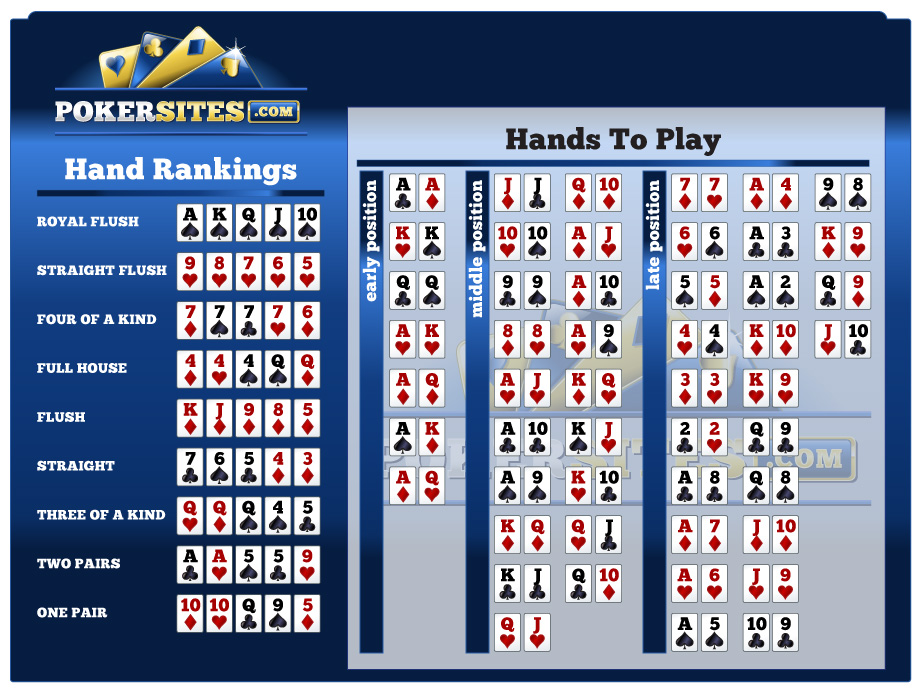Poker Odds And Outs
There are many aspects to poker that you learn as you play and study over time. For example:
- Knowing when it’s optimal to use ICM in your decisions or not
- Spotting great opportunities to pull off big bluffs
- Committing to double or triple-barrel based on your opponent’s post flop stats
Texas Holdem Odds and Outs In the Poker variant known as Texas Hold ‘Em it’s very important to consider what the chances are of you improving your hand after the flop is dealt. If you have a poor starting hand, you will need to consider what cards can come on the turn & river, that could give you the best possible hand and more chances of. Chances of catching 1 of N outs post flop. Note: No need to memorize this table, these percentages can be estimated rather easily. Multiply outs x 4 to estimate catching on the turn or river, and multiply outs x 2 to estimate catching exactly on the turn or exactly on the river. You can figure out your outs and odds for any hand, but here is a quick and dirty list of the most common scenarios: Texas Hold'em Cheat SheetOdds Based on Outs after the Flop If after the flop, you have: Two outs: Your odds are 11 to 1 (about 8.5 percent) A common scenario would be when you have a pair and you are hoping your pair becomes a.
But, there are some things that don’t need to come with time, and can be learned through memorization. Poker Outs & Odds are one of them.

A long time ago I stumbled across an Outs & Odds sheet like this one which I just created:
As a quick explanation of how to use this chart, I’ll go over an example. If you’ve got an open-ended straight draw w/78 on a board of A56, you’ve got 8 outs to hit the straight on the turn or river. Looking at the 8 outs ‘oesd’ line above, you can see that on the flop you’ve got a 31% chance you’ll hit your hand by the river (or conversely a 69% chance you’ll miss). If you’re on the turn with your 8 outs, you have just a 17% chance of hitting on the river (83% chance of missing).
The two columns on the right show how there’s a simple shortcut to the math, the x4 and the x2 rules which estimate odds based on the number of outs and the street you’re on. The shortcut is within 2% through 11 outs, and widens a little bit more at 12 outs and beyond.
When I first got this sheet I took it as gospel and didn’t bother to figure out how to come up with these numbers myself. But just today I watched a webinar by @TheAssassinato (Alex Fitzgerald) called ‘You Flat Too Much,’ and in it he showed how to calculate these odds. Let me show you how.
Poker Odds Y Outs
The Simple Math Behind Calculating Odds Based on Outs
Having 8 outs on the flop means that out of the 47 cards remaining that we don’t know about (52 card deck minus our hand minus the board), we have a chance of hitting one of these on the turn for 8/47 or 17% (83% of missing).
Later on the turn, the 8 outs would mean that out of the 46 cards remaining now (we’ve seen an additional turn card) there’s a 17.3% of hitting (82.7% of missing). Combining these two ‘missing’ %’s, means there’s a 69% chance of missing your draw in total on the flop and turn (.83 * .827), or just a 31% chance of hitting.
The x4 and the x2 rules are pretty close to these actual numbers for our in-game quick math needs.
A Little Strategy – Combining Equities
Alex also introduced me to a new concept in this video, Combining Equities. Often times when we flop a draw, we just check or check/call in the hopes of hitting our hand. In the 8 outs oesd example, this is a 31% chance of hitting our hand and winning at showdown just based on hand strength. But, if our flop donk bet needs to work 50% of the time as a bluff, and we can hit our hand 31% of the time, our bet really needs to work just 19% of the time, or 1 in 5 times. (50% minus the 31% equity). Our semi-bluff now needs to work so infrequently that if we feel he folds more than 19% of the time, we’re printing money. So making the semi-bluff means we can win it outright when he folds, and b/c we have equity, we can still win if he calls.
How do you like them apples? Much nicer than just relying on the 31% equity and catching the straight by the river. But, you can’t just do this willy-nilly. Look at your opponent’s stats, see which street he gets honest on, and make sure you get there with enough chips to scare him off his hand (assuming you haven’t hit your made hand by then and aren’t going for value).
As you can see, this math is pretty simple and all you’re using is addition, subtraction, multiplication and division. Don’t ever let poker math scare you as most of it is pretty simple once you figure out how to do it.
The next time you’re struggling with some poker math, please shoot me a question via Twitter:
Poker Odds And Outs Calculator
Until next time, study smart, play much and make your next session the best one yet!
Poker Odds And Outs
- The 12 Days of Christmas 2020 Podcast Episodes - December 14, 2020
- Strategies and Action Steps from the Quick Wins Poker Course - November 24, 2020
- How to Quickly Understand Online Tournament Players – Podcast #318 - November 18, 2020